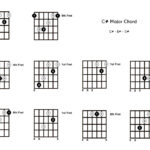Yamaha has been a trusted name in musical instruments for decades, known for producing quality instruments across various price points. From classical guitars to digital pianos, Yamaha products consistently deliver reliable performance and value. Having personally owned Yamaha classical guitars and recently reviewed the impressive Revstar Standard electric guitar, my positive experiences with the brand are well-established. Therefore, recommending Yamaha acoustic guitars has always been something I’ve done with confidence. However, my recent experience with the Yamaha FG800 acoustic guitar genuinely surprised me, exceeding even my already high expectations for the brand, especially considering its remarkably affordable price point.
Yamaha FG800: Specifications and Features
The Yamaha FG800 is crafted in China, a detail that in today’s global manufacturing landscape, doesn’t automatically equate to compromised quality. In fact, many Chinese-made instruments demonstrate exceptional craftsmanship, particularly when manufacturers are tasked with delivering high quality within strict budget constraints. The FG800 boasts a solid Spruce top, which is resonant and vibrant, contributing significantly to the guitar’s overall sound. The back and sides are constructed from a laminate of Mahogany and Nato. It’s worth noting that laminate back and sides are not necessarily indicative of lower quality; even high-end custom guitar builders utilize laminate construction for its durability and tonal properties. Laminate woods offer enhanced resistance to changes in temperature and humidity, making them a practical choice for many players. In this instance, Yamaha specifies “Nato,” which, based on wood industry resources, likely refers to Mora, a South American wood known for its robustness and tonal qualities. While Yamaha doesn’t explicitly state the neck wood, it’s reasonable to assume it is also Mora, given its common usage and similar properties.
The fingerboard and bridge are made of Rosewood, a premium touch that is particularly impressive at this price. Many guitars in significantly higher price brackets now utilize alternative materials like Richlite (a paper composite) for fingerboards. The FG800’s use of rosewood speaks to Yamaha’s commitment to quality, even in their more affordable instruments. The guitar is equipped with sealed chrome tuners that operate smoothly and reliably. The nut and saddle are likely made of plastic, which is standard and acceptable at this price point and is also found on many more expensive guitars. Cosmetically, the FG800 features a clean black binding along the sides where they meet the top and back. The top is further enhanced with a three-line purfling inside the binding, complementing the rosette inlay around the soundhole. A faux tortoiseshell pickguard completes the visual package.
Construction and Build Quality: Inside and Out
While the external fit and finish of the FG800 are clearly well-executed, the true test of a guitar’s construction often lies in the details hidden inside the instrument. To assess this, I used an endoscope to inspect the interior of the FG800 through the soundhole. The findings were quite impressive. Examining the kerfing that joins the back and sides, the workmanship is clean, with no excess glue or sloppy application. The bridge pin holes, often prone to tear-out in Spruce tops, are neatly drilled. Finally, the carved braces, designed to provide structural stability while minimizing weight, are cleanly cut and finished.
This level of internal craftsmanship is beyond what one typically expects in a guitar in the FG800’s price range. Frankly, I’ve observed less refined internal work in guitars originating from factories in North America that retail for considerably more. This attention to detail in construction is a significant factor contributing to the FG800’s overall quality and sound.
Sound Quality and Playability
Playing the Yamaha FG800 reveals its most compelling attribute: its sound. It possesses a rich and warm tone, characteristic of a dreadnought body shape, but surprisingly avoids the muddiness or lack of clarity often encountered in budget-friendly guitars. In fact, the FG800’s sound profile is remarkably refined, especially for an acoustic guitar at its price point. During my evaluation, I was struck by how favorably it compared to guitars costing significantly more. In a direct comparison, the FG800 exhibited a sound that, to my ears, surpassed that of a Martin DX2, an instrument priced nearly three times higher. This is not to diminish the Martin DX2, but rather to highlight the exceptional value and sonic performance of the Yamaha FG800. While playability wasn’t a primary focus of this detailed internal and external inspection, the overall impression is of a guitar that is as enjoyable to play as it is to listen to.
Value and Verdict
The Yamaha FG800 acoustic guitar decisively punches above its weight class. For an instrument available at a street price around $320 CAD (approximately $250 USD), it delivers a level of quality, sound, and craftsmanship that is truly remarkable. The solid Spruce top, Rosewood fingerboard and bridge, coupled with clean internal construction, are features rarely found together at this price. The FG800 is an outstanding choice for beginner guitarists seeking a quality instrument to learn on, as well as experienced players looking for an affordable, reliable acoustic guitar that doesn’t compromise on sound. If you are in the market for an acoustic guitar that offers exceptional value and performance without breaking the bank, the Yamaha FG800 should be at the very top of your list. It redefines what’s possible in an affordable acoustic guitar and stands as a testament to Yamaha’s commitment to quality and value.

